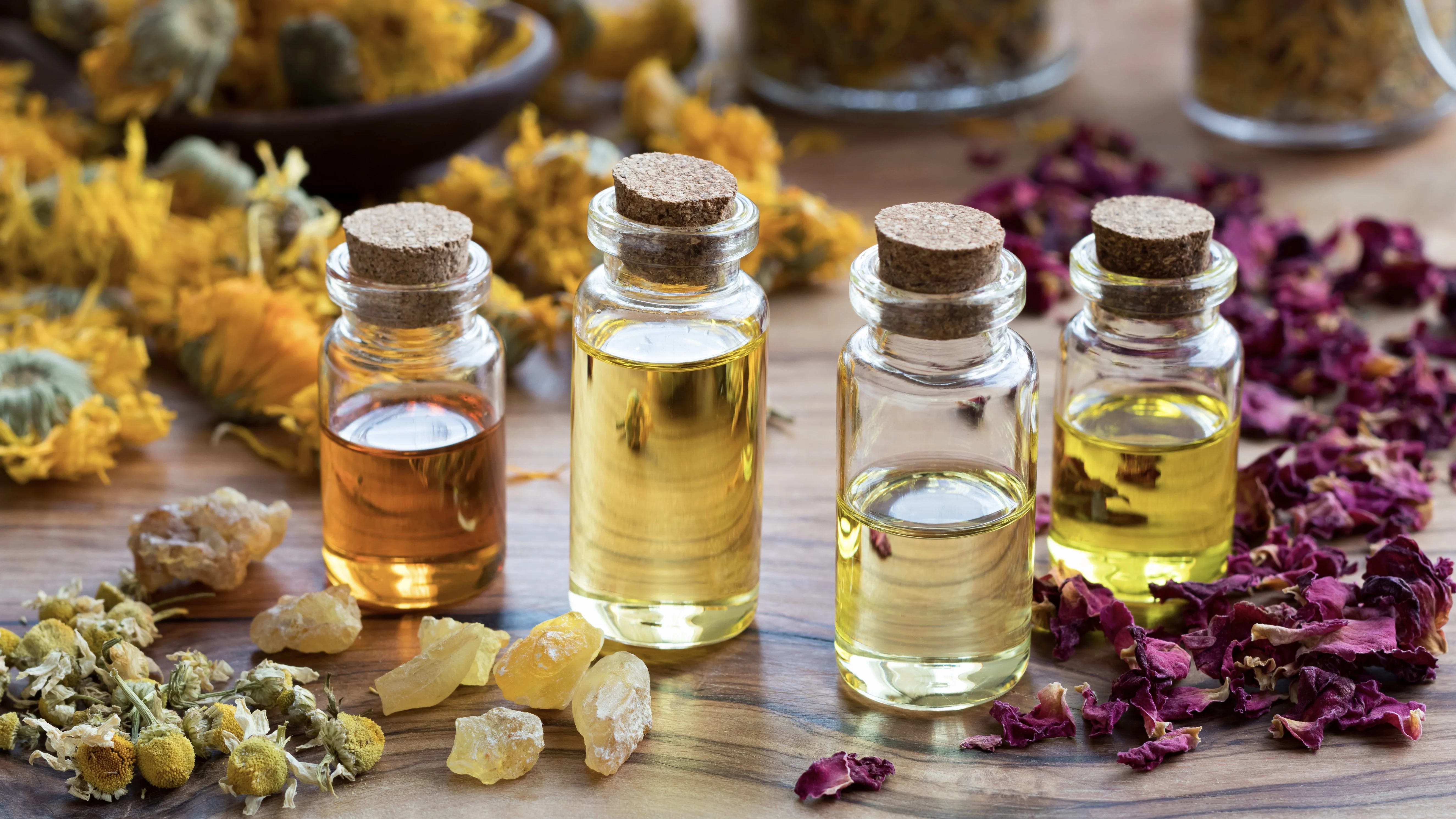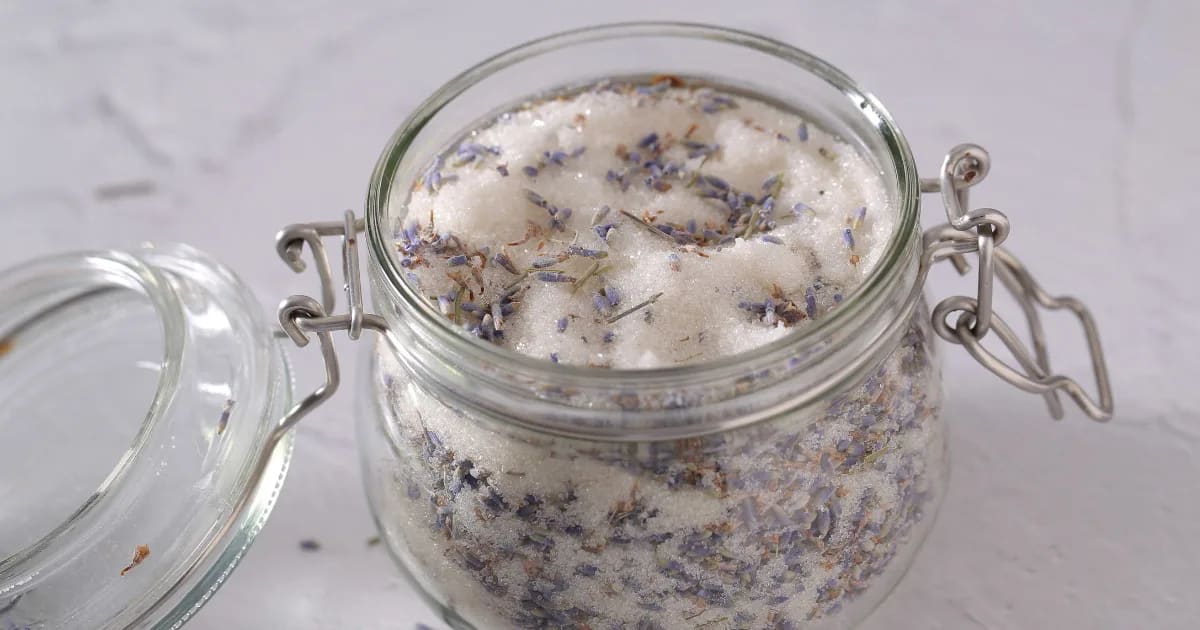What’s an essential oil steam?

Have you ever noticed that the steam of a hot shower can sometimes clear your sinuses?
This is especially comforting when you’re congested, or managing a cold or the flu.
I love making steam feel even more relieving by adding essential oils!
This recipe is a stock blend that combines two conifer oils to clear your breathing, calm inflammation, and encourage overall respiratory wellness. You can add it to hot, steamy water—even if you’re not in the shower! You can do an essential oil steam right at your kitchen table.
You’ll learn the science behind the essential oils below.
2 Conifers Breathing Blend
This stock blend helps clear your breathing, calms inflammation and encourages overall respiratory wellness.
Ingredients
50 drops (2 ml) Balsam Fir essential oil (Abies balsamea)
50 drops (2 ml) Cedarwood Atlas essential oil (Cedrus atlantica)
Equipment
One 5 ml amber glass bottle.
Directions
Combine the essential oils in the bottle, drop by drop.
Tighten the cap to snap the orifice reducer into place.
Add a single drop of the stock blend into a bowl of steamy water.
Close your eyes, lean over the bowl, and breathe in the warm, nourishing steam.
Breathe in the steam for a few minutes, repeating the process several times a day.
Making this blend is simple!
All you need is an empty 5 ml bottle with an orifice reducer. Drop equal amounts of the essential oils in, then tighten the cap. The orifice reducer will snap right into place.
The bottle contains much more of my blend than I’ll need for one session of steaming. I can use it multiple times and even use it in different ways: in my diffuser, an inhaler, or a body oil—this blend will be ready for anything!
This is called a “stock blend.”
A stock blend is a bottle of blended oils
that can be used for more than one thing.
How to do an essential oil steam
Steaming starts with a bowl of hot, steamy water.
I like to have my bowl on the table before filling it with hot water. That way, I’m not trying to carry a bowl of hot water across the room.
Add one drop of your stock blend—just ONE!—to the steamy water. I know it doesn’t seem like much, but steaming is a very potent way to use essential oils. Using too much oil could irritate your eyes or cause a headache. It could even make your congestion feel worse. One drop is plenty.
Take a seat in front of the bowl, close your eyes, and lean over to breathe in the soothing essential oil steam.
If you like, drape a towel over your head to concentrate the steam even more.
About the ingredients in this essential oil steam
Cedarwood Atlas essential oil
Cedrus atlantica
Cedarwood Atlas oil is distilled from the wood of Cedar trees growing in the Atlas Mountains.
Author Salvatore Battaglia (The Complete Guide to Aromatherapy) suggests using it for respiratory health:
The presence of 7 to 10% sesquiterpene ketones gives Atlas Cedarwood oil
an anti-inflammatory action which acts in the first phase of inflammation (reduction of globulins)
associated with a mucolytic effect; this also gives an effective action in certain afflictions
such as hay fever.
Balsam Fir essential oil
Abies balsamea
Balsam Fir oil is distilled from the needles of trees in the forests of Canada.
It’s rich in some amazing components for respiratory health, including α-pinene, β-pinene, and δ-3-Carene. All three components have been shown in studies to calm inflammation, which is so important when your sinuses are clogged. δ-3-Carene has also been shown to reduce mucus. (Make sure you have tissues ready when you do your steam!)
Enjoy using your new stock blend all around your home! The oils will offer respiratory support no matter what types of recipes you use them in.
NOTE:
Atlas Cedarwood (Cedrus atlantica) is on the endangered list. It's a good idea to ask your supplier how their oil is sourced and produced. Aromatics International gets their Cedrus atlantica from a plantation that uses sustainable practices, so the wood isn't taken from the wild. (Just like Sandalwood, there are plantations that grow Cedrus atlantica with fully sustainable harvesting methods.) It's exciting to see this type of conservation and sustainability making a positive impact! We can also suggest using Juniperus virginiana instead of Cedrus atlantica.
Ready to learn the basics of blending your essential oils? How to Blend Essential Oils is for you!
This free course is perfect for beginners who want to create therapeutic blends. In just one hour, we'll explain the difference between essential oils and carriers, show you how to create three different blends and teach you how to use the drop-by-drop method so you can start creating your own blends today!
REFERENCES
Battaglia, S. (1995) The Complete Guide to Aromatherapy. Virginia, QLD: Perfect Potion
Da Silva AC, Lopes PM, de Azevedo MM, Costa DC, Alviano CS, Alviano DS. (2012) Biological activities of a-pinene and ß-pinene enantiomers. Molecules 2012 17, 6305–16
Neves A, Rosa S, Goncalves J et al. (2010) Screening of five essential oils for identification of potential inhibitors of IL-1-induced Nf-kappaB activation and no production in human chondrocytes: characterization of the inhibitory activity of alpha-pinene. Planta Medica 76,3,303-8. doi: 10.1055/s-0029-1186085. Epub 2009 Sep 11
Liapi C, Anifandis G, Chinou I, Kourounakis AP et al. (2008) Antinociceptive properties of 1,8-cineole and beta-pinene, from the essential oil of Eucalyptus camaldulensis leaves, in rodents. Planta Medica 74,7,789
Niccolini P, Pasotti V, Caliari W. (1964) New pharmacological properties of delta-3-carene. Antibacterial and expectorant effects. Bollettino Chimico Farmaceutico 103,598-608
Ocete MA, Risco S, Zarzuelo A et al. (1989) Pharmacological activity of the essential oil of Bupleurum gibraltaricum: anti-inflammatory activity and effects on isolated rat uteri. Journal of Ethnopharmacology 25,305-313





